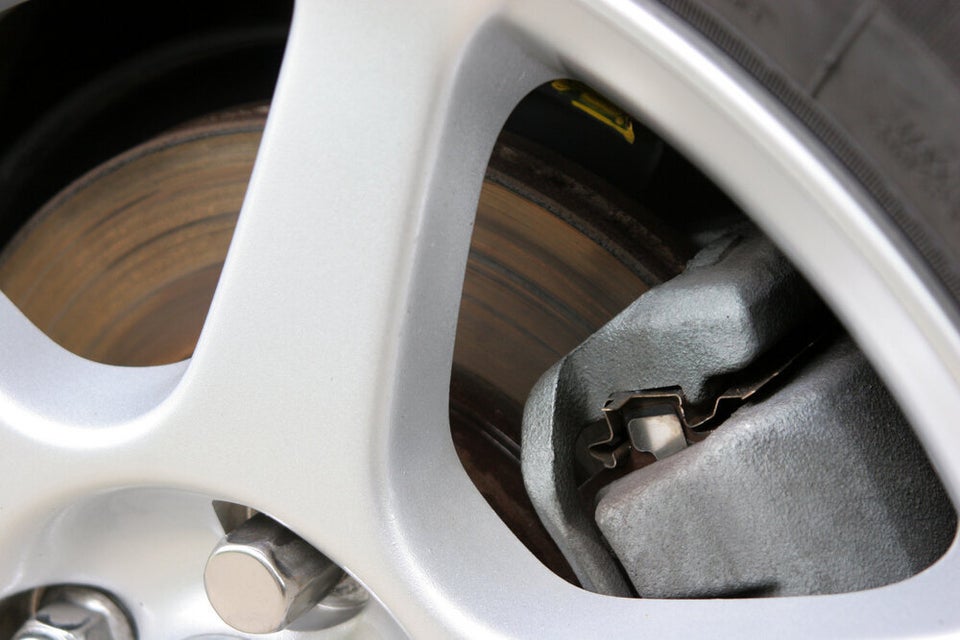
We may not think about it on a daily basis, but there is a science behind everything we do, including winter driving. Ever wonder why black ice is so hard to see or how the tread on a winter tire works? Well, we’ve set out to explain the science behind some of the most common winter driving conditions and answer a few questions related to today’s automotive technology.
The Science Behind Winter Driving. (Slideshow text appears below for mobile readers)
1) How Do Winter Tires Work So Well?
You should invest in a good set of Winter tires, as they are designed to drastically improve performance, safety and traction in winter conditions. But what makes them so different from all-season or high-performance summer tires? Well, winter tires are made of unique rubber compounds that offer a slight stickiness for better grip on ice and slippery snow surfaces regardless of cold temperatures. They also tend to use deeper and wider grooves in their tread patterns to create a larger contact surface and improved ability to push forward on cold, icy and snow covered surfaces. Winter tires feature a compound designed to make the rubber material more flexible and keep its treads free of snow by constantly clearing themselves of snow as they roll, which allows for more consistent grip. That’s how they outperform all-season and summer tires in winter climates.
2) How Do Winter-Specific Wiper Blades Work?
Having a clear view of the road ahead is a critical part of safe driving. Reduced visibility can cause slower reaction times and even an accident. Winter wiper blades are designed to withstand and perform exceptionally well in extreme weather conditions. Winter blades use a rubberized boot to protect the metal superstructure of a conventional wiper blade. This not only prevents exposure to the elements and road salt, but also helps combat the build-up of ice or snow to ensure vital operation through any storm you may encounter. Be sure to inspect and replace your windshield wipers regularly to avoid common problems such as streaking, skipping, chattering, wearing and splitting.
3) Why Does My Car Slide So Much On Ice?
Driving on snowy and icy roads can cause your car to slide or skid along a slippery surface. While some vehicles are better-suited for the snow than others, you can safely keep your car under control with a set of Winter tires and some effective driving techniques. When you’re trying to accelerate from a standstill, be sure to ease into the accelerator for better traction and to prevent slippage. The rubber compounds found in Winter tires are also designed to vastly increase grip in colder temperatures. Skidding on icy roads involves the loss of tire grip and can dangerously occur when turning into a corner too fast. To correct for any skid, simply let up on the gas and gently turn your wheels towards the direction you want to go, but be careful not to over correct and never re-apply the gas until you are smoothly heading in the right direction.
4) Why Is Black Ice So Hard To See?
As one of the most dangerous threats to winter drivers, black ice is known to cause a high number of accidents. Black ice often starts life as liquid from rain or fog which quickly develops into invisible ice in cold weather conditions. Due to its slower freezing rate the droplets of water are able to run together seamlessly before they completely freeze (so that no air bubbles are able to form), and the frozen sheet of black ice becomes almost completely clear. Black ice often blends in with the ground which disguises its surface to look clear and dry at times.
5) Why Does A Battery Die Or Lose Charge In Cold Weather?
Many of us have come out on a chilly Winter morning to find out the car just won’t start… but why? First off, if the car battery is old, then it’s not going to be able to produce the same current it used to (since all batteries weaken over time). A cold battery is unable to deliver enough current to start your car, but it might still make the familiar chugging noise as it tries. Did you know that in severely cold weather the power available from a fully charged battery is only half what it would be in warm weather conditions? Well it’s true and when the temperature falls it becomes harder to start your car, as there has to be enough juice in the battery for it to turn over the engine and then it’s able to produce more energy. This is especially true when your car is running additional electronics such as lights, heating and even your stereo (which are all additional drains on a battery). It’s important to have your battery tested and replaced as needed before it leaves you stranded in the cold this Winter.
6) How Do ABS Brakes Work?
Most cars on the road today have some form of Antilock Braking System (ABS) which has led to better braking and safer stopping distances. ABS is an automated four-wheel system that uses the principles of threshold braking (practiced by professional drivers) to prevent wheel lock-up and avoid uncontrolled skidding. ABS does this at a much faster rate and with better control than a driver could manage, automatically modulating brake pressure during an emergency stop in slippery conditions. By preventing the wheels from locking up when you hit the brakes, ABS enables the driver to maintain steering control and to stop in a shorter distance. Even professional drivers can't stop as quickly without ABS as an average driver can with ABS. Be sure to have you ABS system inspected to ensure it’s working properly.
7) How Does Salt Melt Ice?
We all know that salt is used to melt ice on sidewalks, driveways and roads during the winter months, but how exactly does it all work? We put on our chemistry hats and learned that salt dissolves fairly rapidly into ice by lowering the freezing point of water (known as freezing point depression) and melting it in the process. Basically, salt molecules are bonding with water molecules, making it more difficult for ice to form. The result is a solution with a lower freezing temperature. The salt used on sidewalks and roads will melt ice down to -9 degrees Celsius or 15 degrees Fahrenheit, which effectively stops it from freezing.
8) How Come Antifreeze Won’t Freeze?
The coolant found in your vehicle’s radiator is a 50/50 mixture of water and antifreeze, but how does this combination prevent itself from freezing in the winter and provide cooling to your car in the summer? The quick science lesson is that using regular water as engine coolant wouldn‘t work because it would boil at 100 degrees Celsius and freeze at 0 degrees. But much like the concept behind salt melting ice, when you mix the water 50/50 with glycol (antifreeze), it manages to lower the freezing point and raise the boiling point enough to remain liquid under all temperature conditions. So it will not freeze in cold winters or boil during hot summers. Be sure to have your coolant system checked by a professional to ensure a trouble-free winter season ahead.
